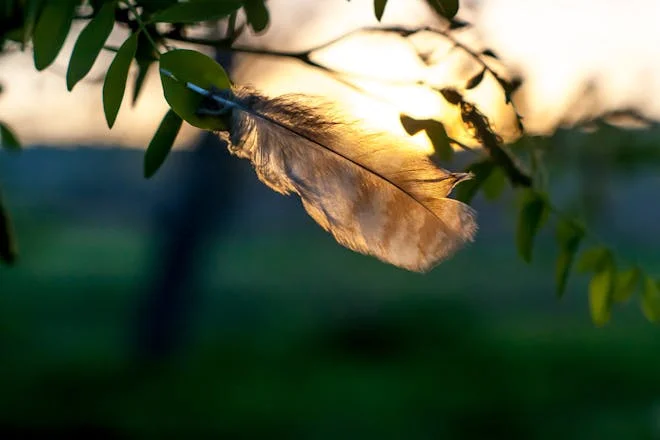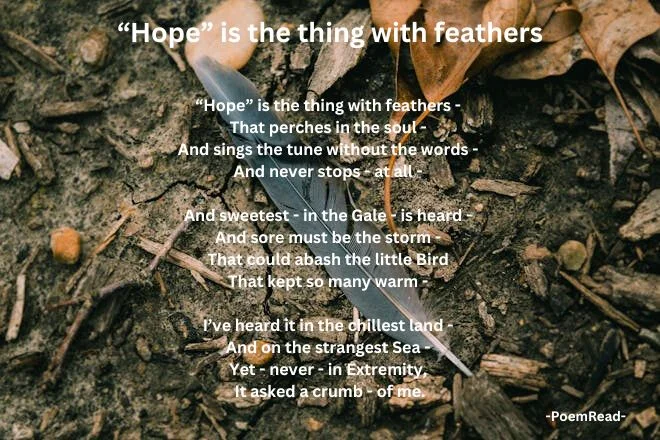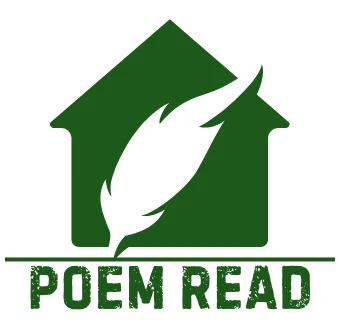
Emily Dickinson’s “Hope is the Thing with Feathers” is a captivating exploration of the enduring power of hope, set against the backdrop of her unique and unconventional style. Delving into themes of love, nature, and the human experience, Dickinson’s poems resonate with readers long after her time.
In this article, we’ll dissect the subject, context, theme, tone, and form of “Hope is the Thing with Feathers,” unraveling the layers of metaphor and imagery that make Dickinson’s work a timeless treasure in American literature. Join us on this journey as we unravel the meaning behind Dickinson’s portrayal of hope as a resilient bird with feathers that sings an eternal melody within the soul, offering solace and strength in times of adversity.
“Hope” is the thing with feathers BY EMILY DICKINSON “Hope” is the thing with feathers - That perches in the soul - And sings the tune without the words - And never stops - at all - And sweetest - in the Gale - is heard - And sore must be the storm - That could abash the little Bird That kept so many warm - I’ve heard it in the chillest land - And on the strangest Sea - Yet - never - in Extremity, It asked a crumb - of me.
Content
- About the Author: Emily Dickinson
- Subject of "Hope is the Thing with Feathers"
- Context of "Hope is the Thing with Feathers"
- Theme and Tone of "Hope is the Thing with Feathers"
- Form and Structure of "Hope is the Thing with Feathers"
- Line-by-Line Analysis of "Hope is the Thing with Feathers"
- Poetic and Literary Devices Used in "Hope is the Thing with Feathers"
- Implications and Meanings of "Hope is the Thing with Feathers"
- Interactive Summary
About the Author: Emily Dickinson
Emily Dickinson, born in 1830, was an American poet known for her unique and unconventional style. Despite living a reclusive life, she wrote over 1,800 poems, many of which were discovered and published after her death. Dickinson’s poems often explore themes of love, nature, death, and the human experience. Her distinctive use of language and punctuation has made her one of the most celebrated and studied poets in American literature.
Subject of “Hope is the Thing with Feathers”
The subject of Emily Dickinson’s poem “Hope is the Thing with Feathers” is the concept of hope itself. In this poem, Dickinson personifies hope as a bird with feathers that resides in the soul. This bird sings a melody that transcends words and never ceases, even in the face of adversity. The poem explores the power of hope to provide comfort and resilience in difficult times.
Context of “Hope is the Thing with Feathers”
Emily Dickinson wrote during the 19th century, a time marked by significant social and cultural changes. This era witnessed the rise of industrialization, the abolitionist movement, and the American Civil War. Dickinson’s poetry reflects the tensions and uncertainties of this period, as well as her own personal struggles with isolation and introspection. “Hope is the Thing with Feathers” was written during a time of personal crisis for Dickinson, and it reflects her desire to find solace and strength in the midst of adversity.
Theme and Tone of “Hope is the Thing with Feathers”
Theme: The Power and Perseverance of Hope
The theme of the poem centers on the power of hope. Described metaphorically as a bird, hope is depicted as a resilient force that endures through all conditions. It is a source of comfort and strength that sings ceaselessly within the soul, never demanding anything in return.
This portrayal of hope serves as a reminder of its vital role in helping individuals persevere through life’s challenges. The poem suggests that hope is an innate quality that can outlast even the most difficult circumstances, providing a sense of possibility and optimism.
Tone: Optimistic and Uplifting
The tone of the poem is optimistic and uplifting. Despite the hardships and “storms” that life presents, the tone suggests that hope remains undiminished. It is “sweetest – in the Gale,” indicating that the presence of hope is most profound and necessary when times are toughest. The gentle and reassuring quality of the tone conveys a message of comfort: hope is a steadfast companion that does not falter, even in extreme conditions.
The combination of the poem’s theme and tone creates a powerful expression of the enduring nature of hope. Dickinson’s choice of language, with its lyrical quality and use of metaphor, enhances the poem’s message, making it resonate with readers long after they encounter it. The poem’s optimistic view serves as an encouragement to hold onto hope, no matter the adversity faced.
Form and Structure of “Hope is the Thing with Feathers”
The form and structure of Emily Dickinson’s “Hope is the thing with feathers” are integral to its meaning and impact. Let’s explore these elements in detail.
Form: Quatrains and Rhyme Scheme
The poem is composed of three quatrains, or stanzas of four lines each, adhering to an ABCB rhyme scheme. This structure is typical of Dickinson’s poetry, which often features short stanzas and simple rhyme patterns that contradict the complexity of her themes.
Rhyme and Rhythm
The consistent use of rhyme and rhythm throughout the poem provides a sense of stability and reliability, reinforcing the theme that hope is a constant, unwavering presence in the soul.
Rhythm: Ballad Meter
Dickinson employs ballad meter, a form of verse often used in traditional folk songs and hymns. The alternating lines of iambic tetrameter and iambic trimeter give the poem a rhythmic quality that is both familiar and comforting, much like the concept of hope itself.
Rhyme: Loose and Unpredictable
While the poem follows a loose rhyme scheme, it is not strictly adhered to, reflecting the unpredictable nature of hope. The slant rhymes and near rhymes create a sense of harmony without uniformity, mirroring the way hope can vary in intensity and presence.
Punctuation: Dashes and Pauses
Dickinson’s sparse use of punctuation allows the poem to maintain an open and airy feel, much like the bird that symbolizes hope. The lack of commas and periods lets the thoughts flow freely, suggesting the boundless nature of hope.
Furthermore, the poet’s use of dashes introduces pauses that break the conventional flow of reading. These pauses serve to emphasize certain words or phrases, inviting the reader to reflect on the meaning and significance of hope in their own lives.
Line Breaks: Significance and Emphasis
The line breaks in the poem are deliberate, often occurring before a dash or at a point of natural pause. This technique draws attention to the individual lines and the ideas they convey, such as the endurance of hope despite adversity.
In summary, the form and structure of “Hope is the thing with feathers” contribute significantly to its overall meaning. The quatrains, ballad meter, and unique use of punctuation all work together to create a poem that is as rhythmic and enduring as the hope it describes.
Line-by-Line Analysis of “Hope is the Thing with Feathers”

First Stanza: The Embodiment of Hope
Here, Dickinson introduces the central metaphor of the poem, depicting hope as a bird. This bird, or hope, is not just any creature; it is one that resides within the “soul,” suggesting a deep, spiritual connection. The bird’s song is continuous and wordless, symbolizing the ineffable quality of hope that persists in all conditions.
“Hope” is the thing with feathers –
The poem begins with a metaphor, comparing hope to a bird. The “feathers” suggest lightness and the ability to soar, implying that hope has the capacity to uplift the spirit.
That perches in the soul –
Hope is personified as a bird that settles within the deepest part of ourselves, the soul. This line emphasizes the intimate and intrinsic nature of hope in our lives.
And sings the tune without the words –
Hope’s song is wordless, representing a feeling or emotion that transcends language and is universally understood.
And never stops – at all –
The dash following “stops” creates a pause, underscoring the persistence of hope. It continues endlessly, suggesting its eternal presence.
Second Stanza: The Resilience of Hope
In these lines, Dickinson speaks to the strength of hope. It is “sweetest” when the “Gale,” or troubles, are most severe. The “little Bird” of hope provides warmth, a metaphor for comfort and reassurance, even in the face of the most daunting “storm.” The use of the word “abash” implies that it would take a significant force to silence hope, underscoring its resilience.
And sweetest – in the Gale – is heard –
Hope is most profound during challenging times, symbolized here by a “Gale,” or strong wind. It’s in these moments that hope becomes a critical source of comfort and strength.
And sore must be the storm –
The word “sore” personifies the storm, giving it a sense of pain or difficulty, which contrasts with the sweetness of hope heard within it.
That could abash the little Bird
To “abash” means to embarrass or disconcert. This line suggests that it would take a tremendous force to silence the bird, or hope, within us.
That kept so many warm –
The bird of hope not only sings but also provides warmth, symbolizing the comfort and encouragement that hope offers.
Third Stanza: The Universality and Selflessness of Hope
Hope is present everywhere, from the “chillest land” to the “strangest Sea,” indicating its universality. Despite its omnipresence and the comfort it provides, hope is selfless—it “never… asked a crumb” of the speaker. This selflessness emphasizes the unconditional nature of hope, offering support without expecting anything in return.
I’ve heard it in the chillest land –
Hope is present even in the coldest, most desolate places, indicating its ability to reach us wherever we are.
And on the strangest Sea –
The “strangest Sea” represents unfamiliar and challenging circumstances. Hope remains a constant, even in the most unexpected conditions.
Yet – never – in Extremity,
“Extremity” refers to extreme situations. The dashes around “never” emphasize the absolute nature of hope’s constancy.
It asked a crumb – of me.
The poem concludes with the idea that hope, despite its unwavering support, asks for nothing in return. It is selfless and sustaining, a gift that requires no repayment.
Poetic and Literary Devices Used in “Hope is the Thing with Feathers”
Emily Dickinson’s “Hope is the thing with feathers” is a masterful use of poetic and literary devices that contribute to its depth and resonance. Here’s an exploration of some of these devices employed in the poem:
Extended Metaphor
The central device Dickinson uses is an extended metaphor, comparing hope to a bird throughout the entire poem. This metaphor is not just a fleeting comparison but is intricately developed and sustained across all three stanzas, painting a vivid picture of hope as a living, breathing entity within the soul.
Personification
Closely related to the extended metaphor is personification, where hope, an abstract concept, is given the characteristics of a bird that “sings,” “perches,” and “keeps warm.” This literary device makes hope more tangible and relatable to the reader.
Imagery
Dickinson employs rich imagery to evoke the senses and emotions. Phrases like “the thing with feathers” and “sings the tune without the words” create a sensory experience that brings the abstract concept of hope to life.
Anaphora
The repetition of the word “And” at the beginning of several lines is an example of anaphora. This device creates a rhythmic cadence and emphasizes the continuity of hope’s presence and qualities.
Alliteration and Assonance
The poem also uses alliteration and assonance to enhance its musicality. For instance, “sings the tune without the words” uses the repetition of the ‘s’ sound, while “And sweetest – in the Gale – is heard” repeats the ‘s’ and ‘t’ sounds.
Consonance
Consonance is present in the repeated ‘d’ sound in “And never stops – at all –” which adds to the poem’s lyrical quality.
Polysyndeton
The use of multiple conjunctions in close succession, as seen in “And sings the tune without the words – And never stops – at all –,” is known as polysyndeton. This device can give the poem a feeling of expansiveness and ongoing continuity.
Pathetic Fallacy
Dickinson uses pathetic fallacies when she attributes human emotions to the storm, suggesting it could “abash the little Bird.” This device helps to convey the intensity of the challenges that hope can withstand.
Slant Rhyme
The poem’s rhyme scheme includes slant rhymes, where the end sounds are similar but not exact matches, such as “soul” and “all” or “sea” and “me.” This choice reflects the poem’s theme of hope being a subtle, ever-present force rather than an overt or forceful one.
Capitalization
Dickinson’s unconventional capitalization of certain words, such as “Hope,” “Gale,” and “Bird,” draws attention to these elements, emphasizing their significance within the poem.
Dashes
The use of dashes throughout the poem creates a unique rhythm and allows for pauses that encourage reflection. These pauses can signify moments of contemplation or the silent spaces where hope operates.
These devices work together to create a poem that is both simple and profound, accessible yet layered with meaning. Dickinson’s skillful use of language invites readers to experience the concept of hope in a new and deeply personal way.
Implications and Meanings of “Hope is the Thing with Feathers”

The poem “Hope is the thing with feathers” by Emily Dickinson carries profound implications and meanings that resonate with readers across time and cultures. Here’s an exploration of the poem’s deeper significance:
Hope as Innate and Universal
The poem suggests that hope is an innate quality within every soul, a natural and universal aspect of the human experience. It is depicted as a bird that resides in the soul, singing endlessly, which implies that hope is not something external to be sought but rather an internal constant.
Resilience and Comfort
Dickinson portrays hope as a resilient force that thrives even in the most challenging conditions. The metaphor of the bird singing sweetest in the gale implies that hope becomes more pronounced and necessary during difficult times, offering comfort and solace when it is most needed.
Selflessness and Hope
The poem emphasizes the selfless nature of hope. It never asks for anything in return, even in the direst circumstances. This characteristic of hope highlights its purity and its role as a self-sustaining source of strength and encouragement.
Hope as a Spiritual Sustenance
By placing the bird of hope in the soul and describing its song as wordless, Dickinson touches on the spiritual aspect of hope. It is a form of sustenance that nourishes the spirit, transcending the physical and material worlds.
The Power of Simplicity
The simplicity of the poem’s language and structure belies its depth, suggesting that hope, too, is simple yet powerful. It does not require grand gestures or conditions to exist; it simply is.
The Endurance of Hope
The poem implies that hope endures through all adversities. It is heard in the “chillest land” and on the “strangest Sea,” symbolizing its presence in all situations, no matter how bleak or unfamiliar.
The Poem as a Source of Inspiration
Finally, the poem itself serves as a source of inspiration. Its enduring popularity and the affection it garner from readers suggest that it fulfills the very essence of hope that it describes—uplifting and encouraging those who come across its lines.
In summary, “Hope is the thing with feathers” is a rich tapestry of meaning, woven from the threads of resilience, comfort, selflessness, and spiritual sustenance. It is a reminder of the quiet power of hope that dwells within each person, asking for nothing yet offering everything in times of need.
Interactive Summary
“Hope is the Thing with Feathers” by Emily Dickinson is an uplifting poem that explores the enduring power of hope. Through vivid imagery and metaphorical language, Dickinson portrays hope as a bird with feathers that resides in the soul. The poem’s regular meter and rhyme scheme, along with its use of pauses and line breaks, create a melodic and lyrical quality.
Dickinson’s use of poetic and literary devices enhances the impact of the poem, while its theme and tone convey a message of optimism and resilience. “Hope is the Thing with Feathers” reminds us of the unwavering nature of hope and its ability to provide comfort and strength, even in the most challenging times.
Discover our insightful review of Emily Dickinson’s “I’m Nobody! Who are You?” and explore more of her captivating works if you’re intrigued by her unique poetic style and themes.
RELATED POSTS
View all



